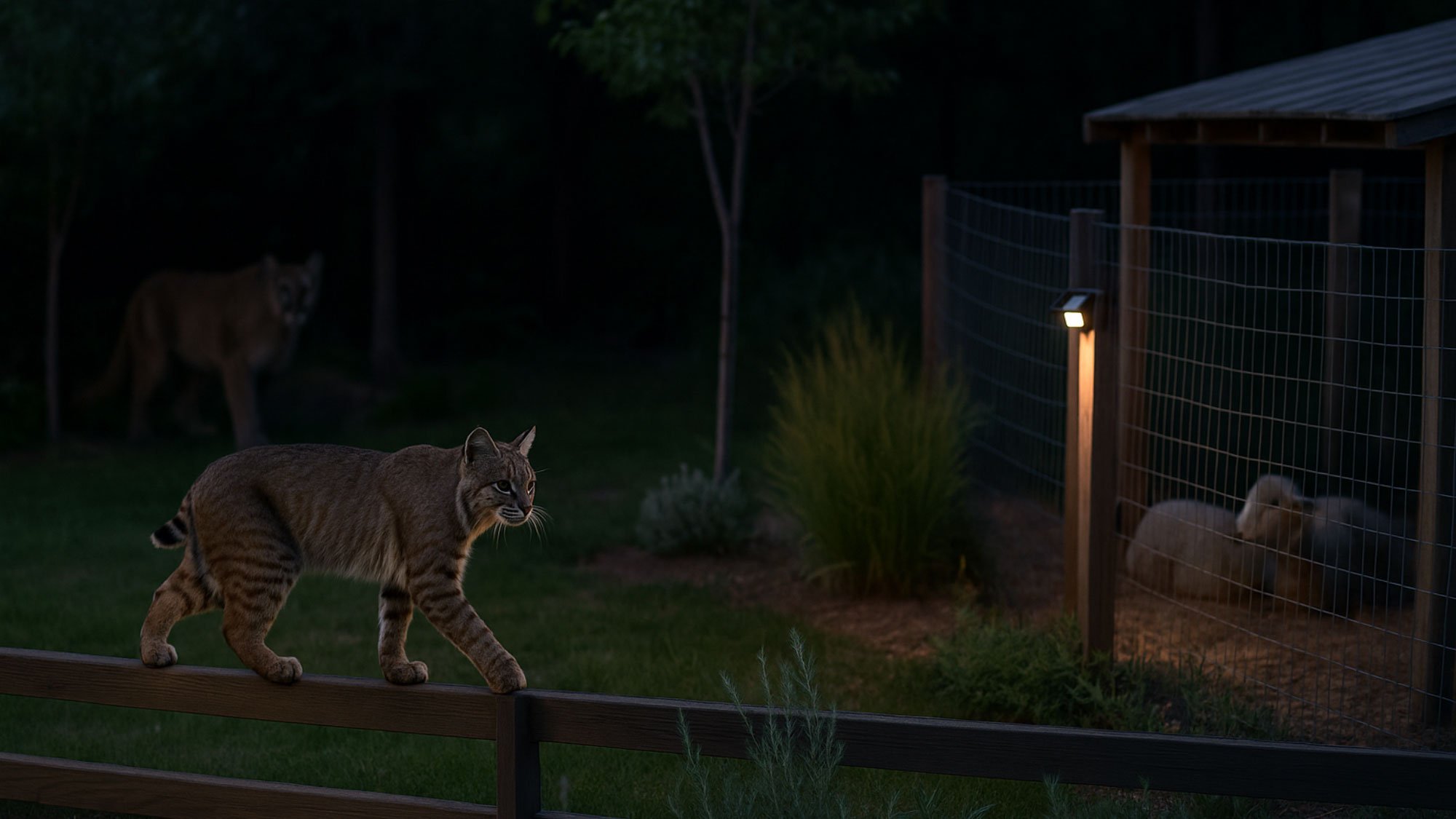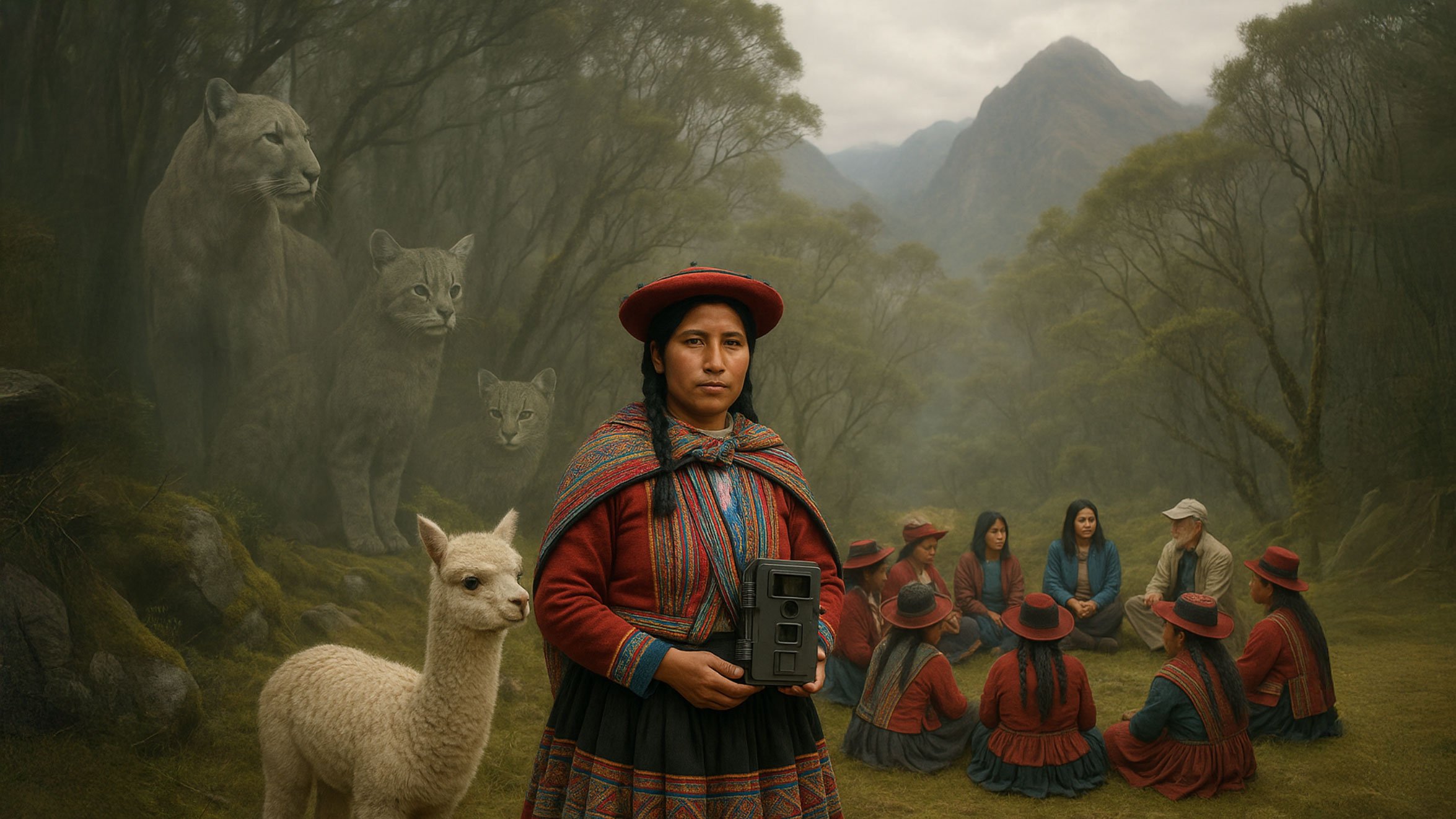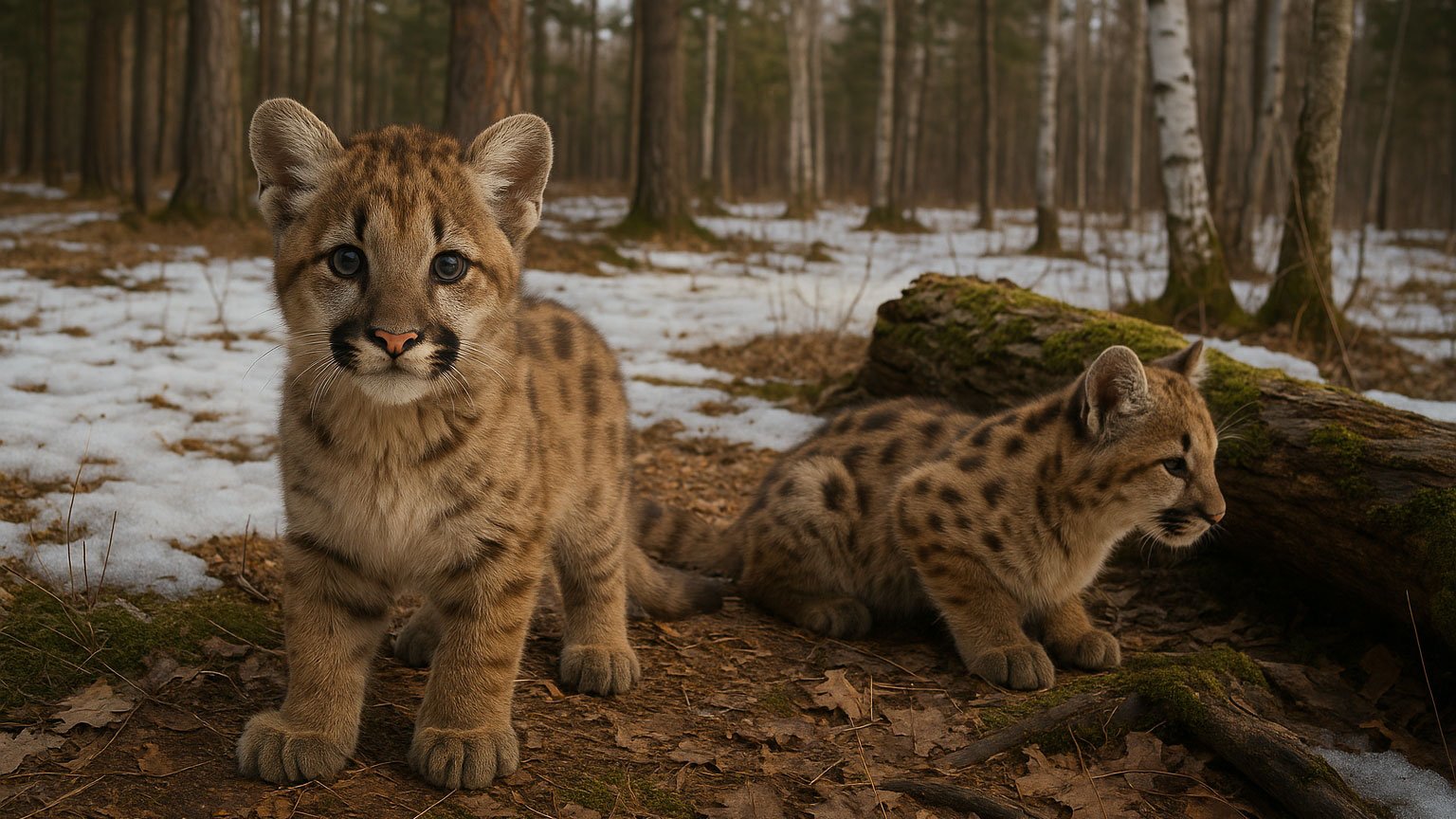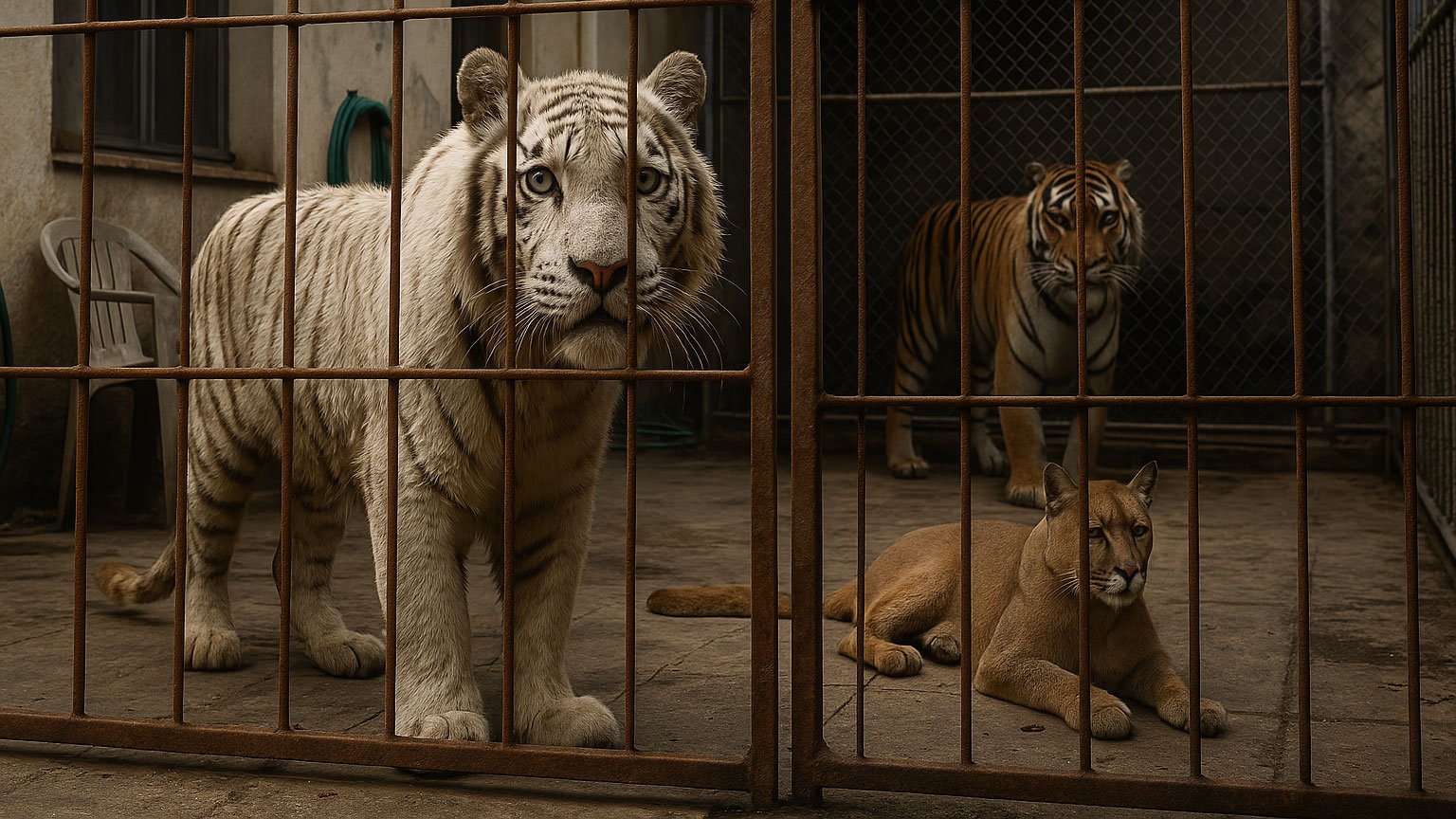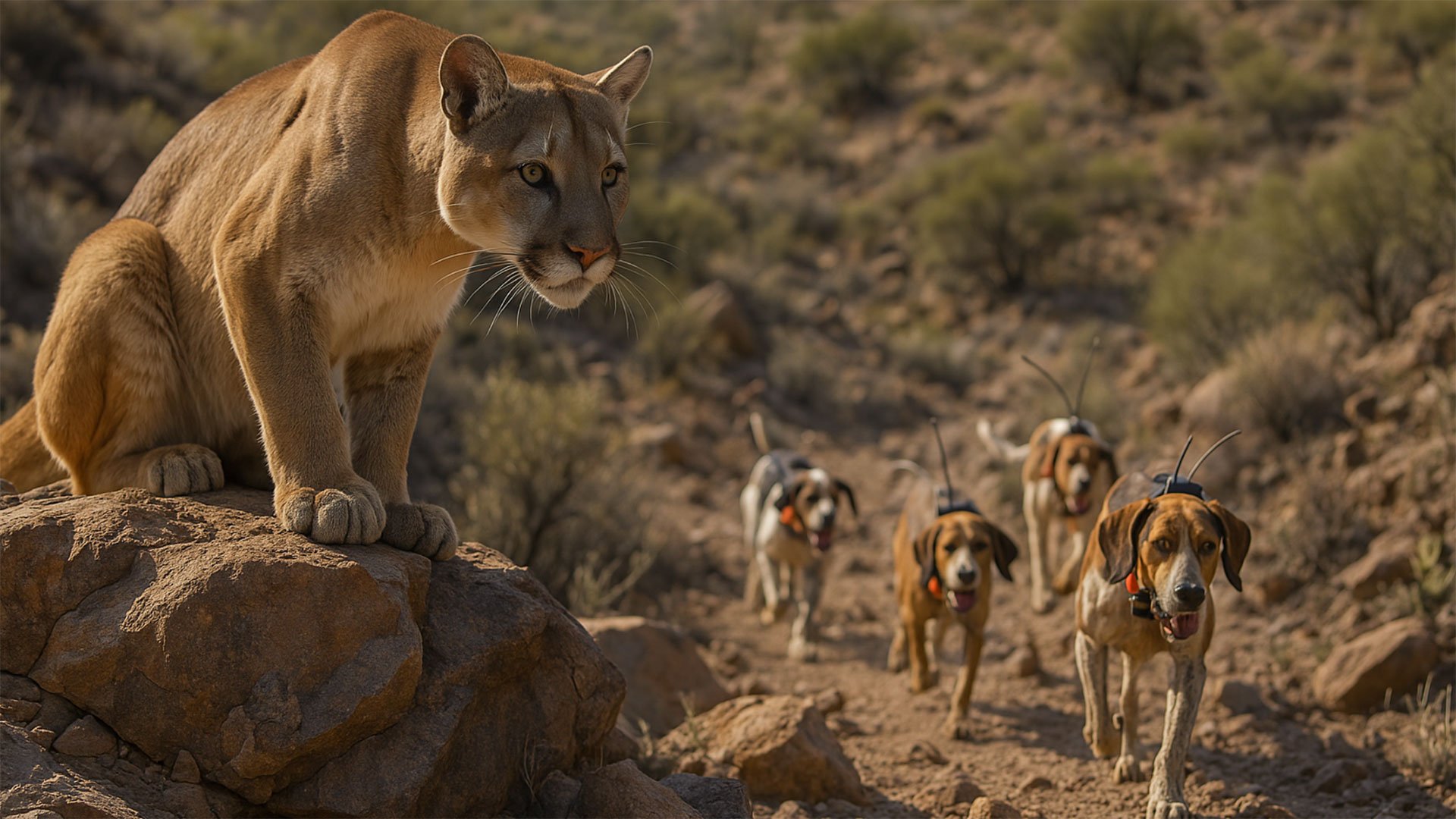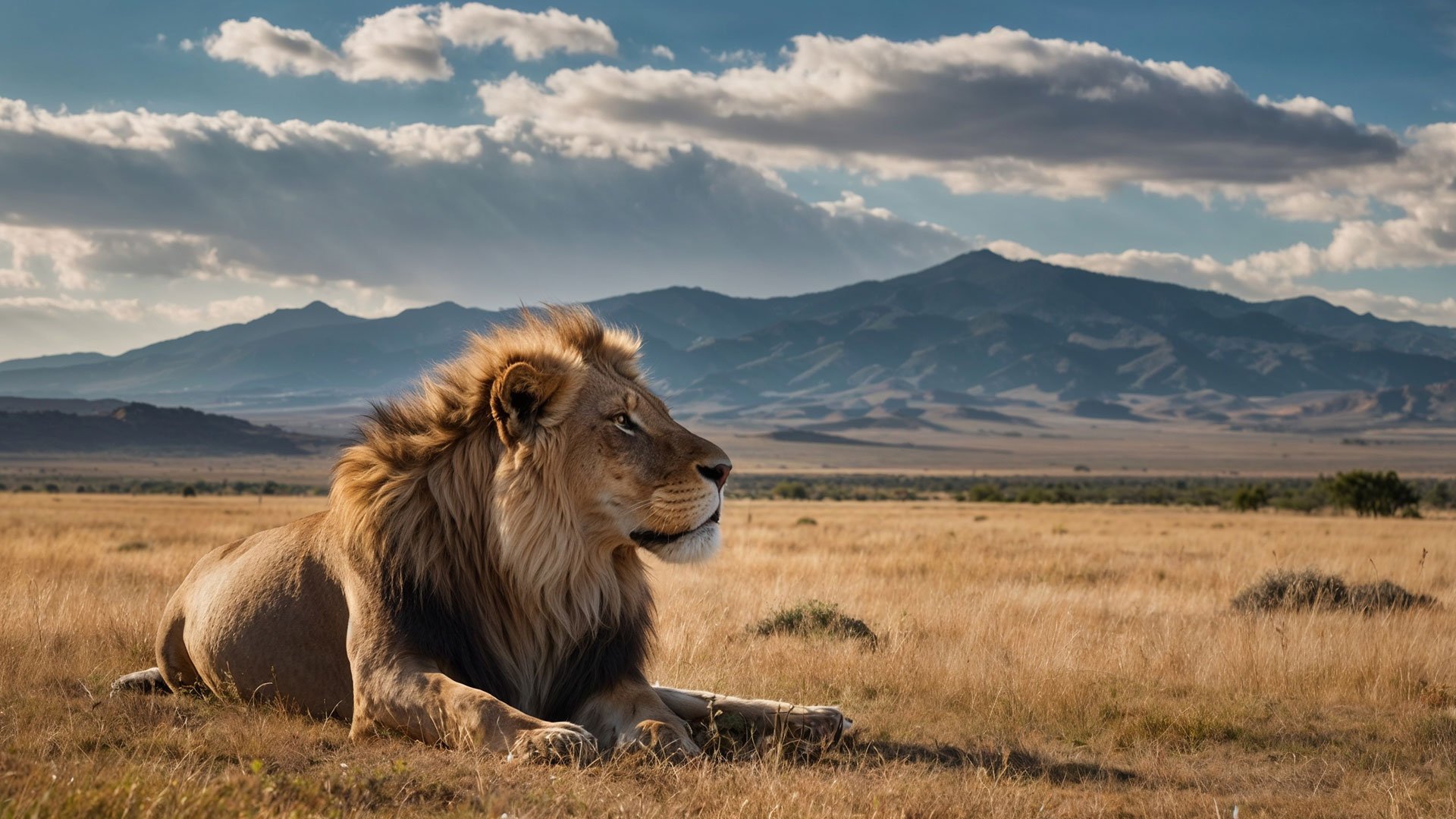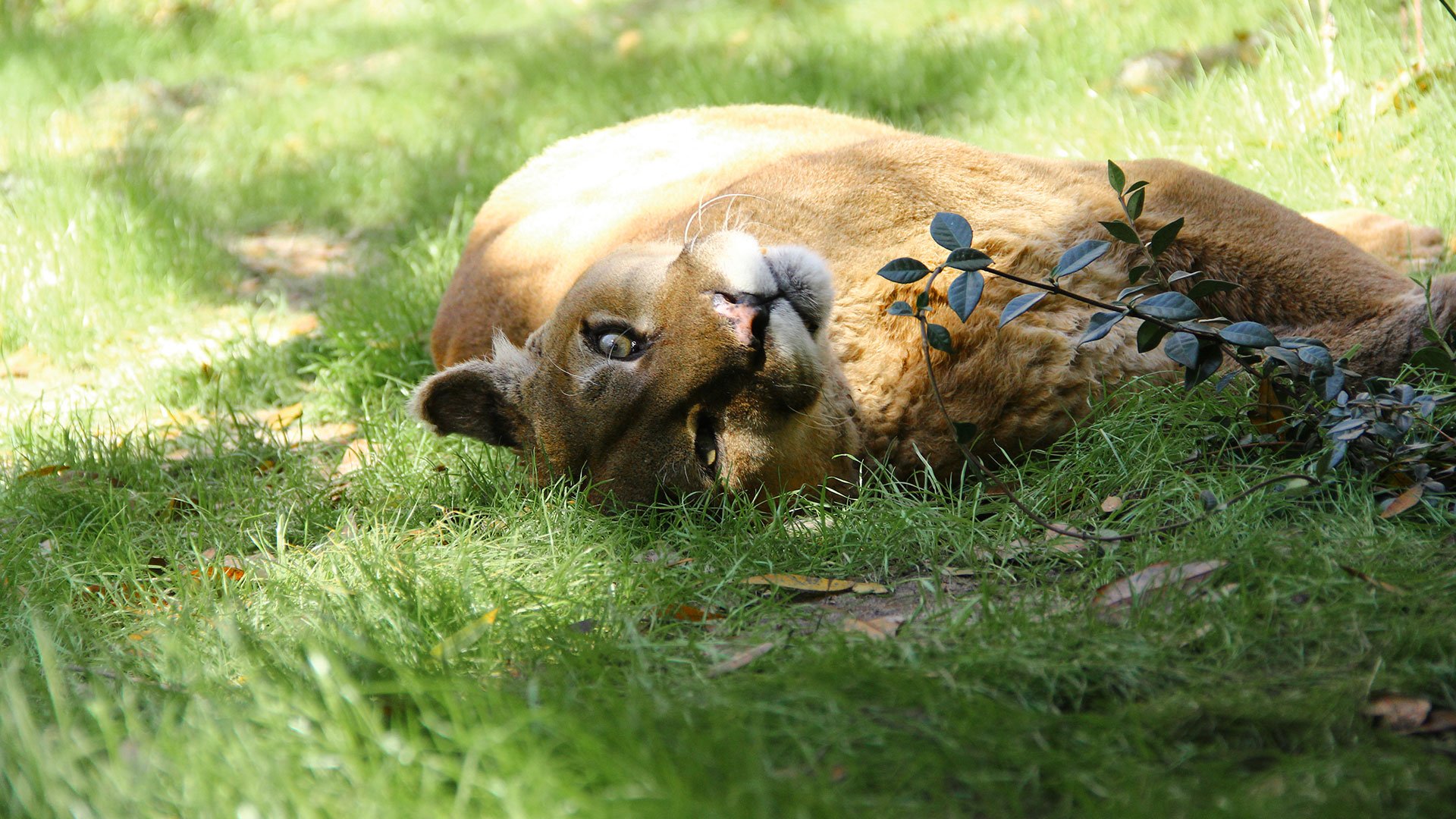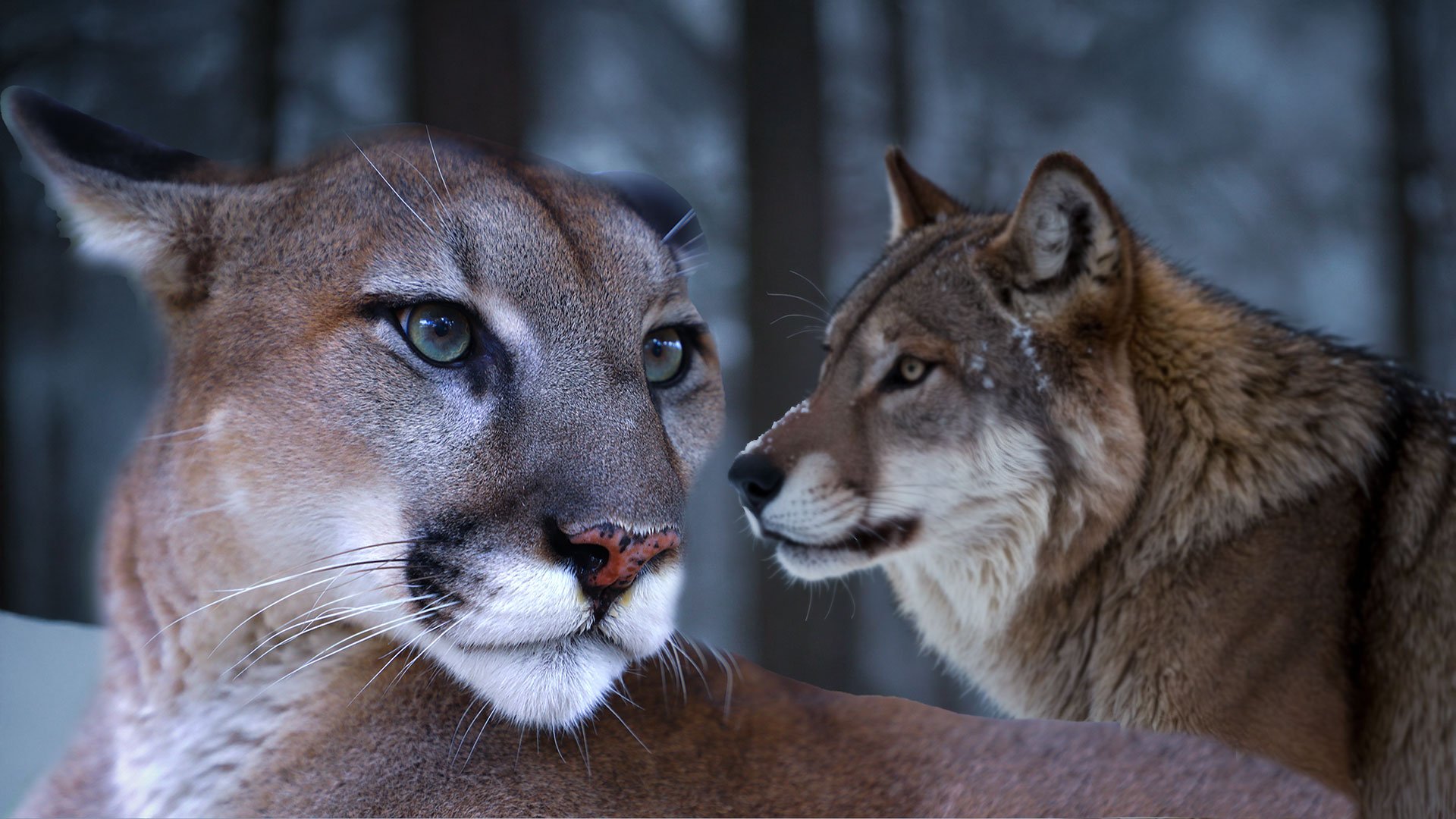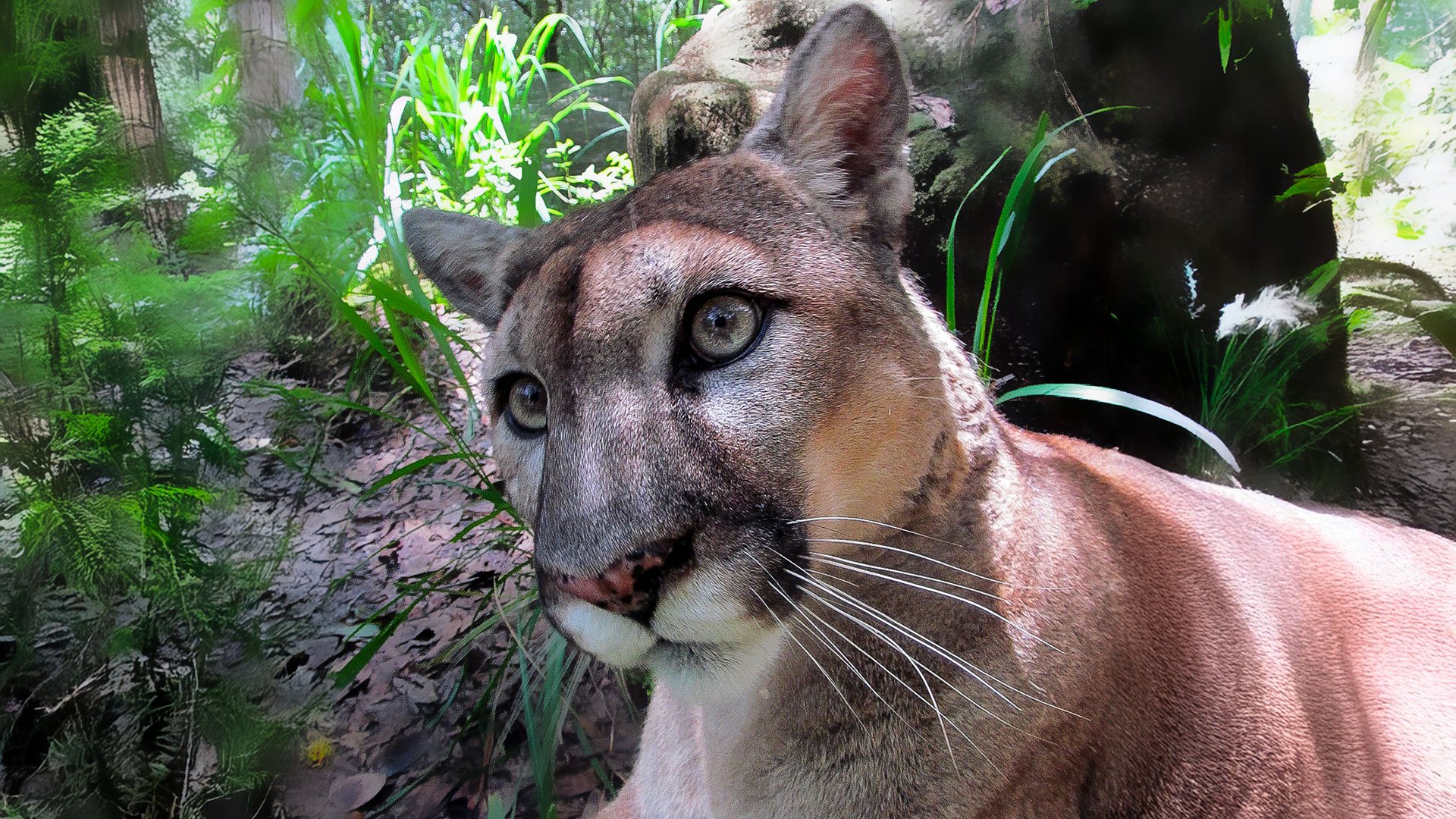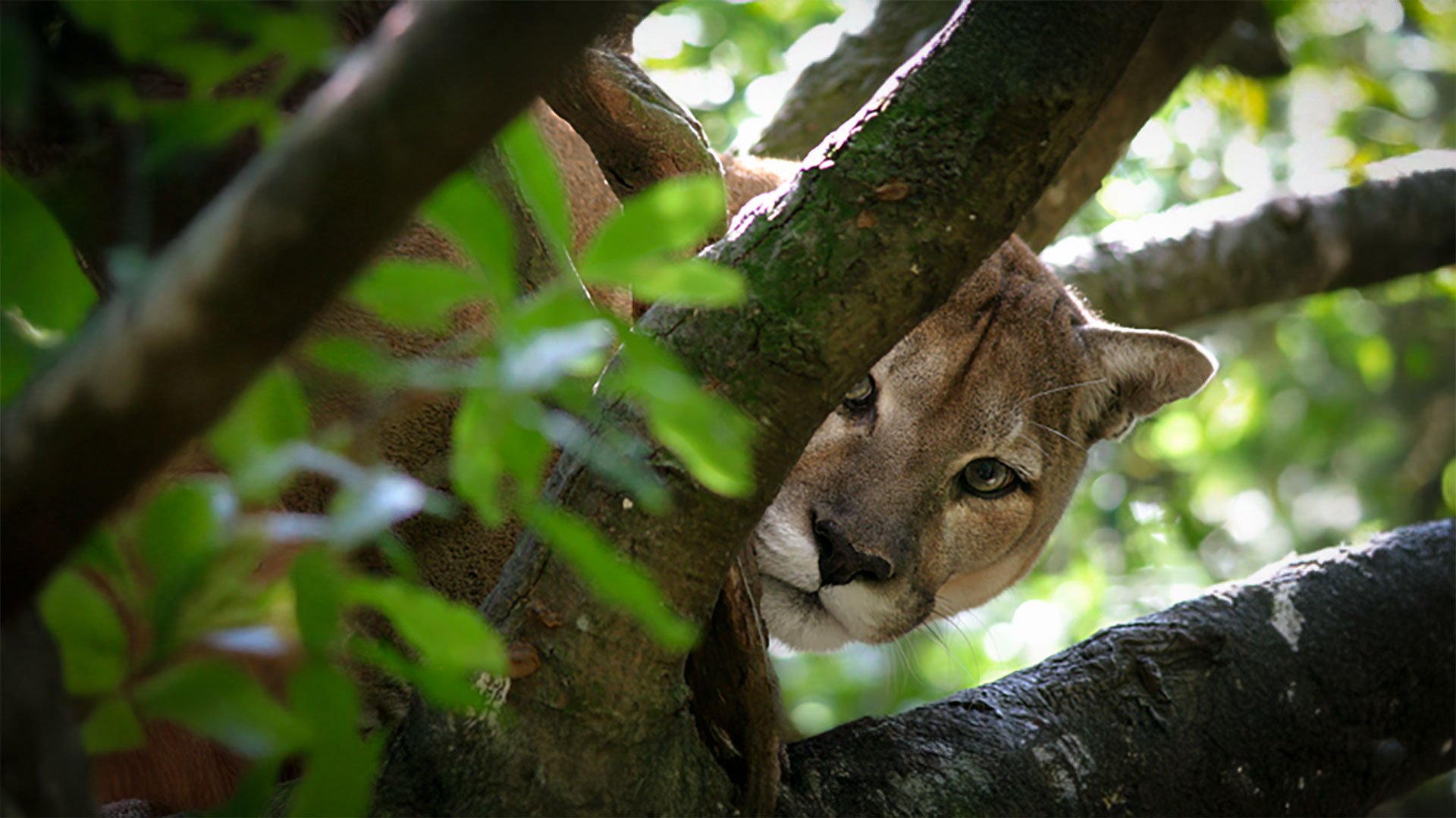Cougar Facts
Cougar, Mountain Lion AKA Puma
Cougar - Felis concolor
Common Names: Cougar, Puma, Panther,
Mountain Lion, Catamount
Kingdom: Animalia
Phylum: Chordata (Vertebrata)
Class: Mammalia
Order: Carnivora
Family: Felidae
Genus: Felinae (Puma)
Species: concolor
Sub-species:
Eastern Texas to Florida – P.c.coryi –IUCN: Endangered, CITES:Appendix I Northeastern US and southeastern Canada Cougar – P.c. couguar - IUCN: Endangered, CITES: Appendix I Central American Cougar – P.c. costaricensis – CITES: Appendix I
Misc: The cougar has the greatest natural distribution of any mammal in the Western Hemisphere except for man.
The cougar is extremely agile and has great jumping power and may leap from the ground up to a height of 18 feet into a tree. It is a good swimmer but prefers not to enter the water. Sight is its most acute sense with a good sense of hearing, but is thought to have a poorly developed sense of smell.
Size and Appearance: The cougar is the largest cat in the genus "felis", and is comparable in size as the leopard. They vary in length from 59 – 108 inches with a tail length of 21 – 36 inches, and height from 23 – 28 inches at the shoulder. Weight can vary greatly, between 75 and 250 pounds. They have a long body with a small head, short face, and a long neck and tail. They are powerfully built, and the hind legs are larger than the front. The ears are small, short and rounded.
Habitat: The cougar thrives in montane, coniferous forests, lowland tropical forests, swamps, grassland, dry brush country, or any other area with adequate cover and prey.
Distribution: Western North America from British Columbia and south Alberta south through west Wyoming to California and west Texas. Also south Texas, Louisiana, south Alabama, Tennessee, and peninsular Florida.
Reproduction and Offspring: There is no fixed mating season, but in North America, the majority of births occur between late winter and early spring. Females tend to reproduce every other year, and give birth to litters of 1 – 6 (usually 2-3) cougar kittens after a gestation of 90-96 days. Mothers give birth to their young in dens that are lined with moss or vegetation, usually in rock shelters, crevices, piles of rocks, thickets, caves, or some other protected place. Kittens weigh approximately 7-16 ounces at birth, and have spotted coats until they are around 6 months old. They will continue to nurse for 3 or more months, but will begin to take meat at 6 weeks. The kittens will remain with their mothers until they are 1-2 years old, and after separating, siblings will remain together for another 2-3 months. Females reach sexual maturity around 2.5 and males around 3 years. They will not begin to reproduce until they have established themselves a permanent home area. The may remain reproductive until 12 years of age for females, and 20 years for males.
https://youtu.be/ML4iUhD2618
In captivity, cougars have lived over 20 years, as compared to 8 - 10 in the wild. At Big Cat Rescue one cougar lived to one month shy of 30 years.
Social System and Communication: Cougars are solitary cats and will avoid other individuals except for during mating. They communicate by the use visual and olfactory signals, and the males regularly make scrapes in the soil or snow. Their vocalizations include growls, hisses, and bird-like whistles. They purr like the domestic cats, and during estrus, the females give off loud, hair-raising screams. Hear our purrs, hisses, snarls, calls, and growl sounds HERE
Hunting and Diet: Cougars primarily feed on large mammals, preferring deer, but they will also eat Coyotes, Porcupines, Beaver, mice marmots, hares, raccoons, birds and even grasshoppers. They kill by stalking to within 30 feet of their prey before pouncing from its hiding place. It leaps onto its victim’s back and bites into the neck and holds with its sharp claws.
Principal Threats: According to 2001 statistics provided from actual sales of hunting permits, almost 2100 cougars are still being killed each year. This figure does not include all the cougars killed by hunters who do not buy licenses nor report their kills. Less than 3% of our population are hunters but they kill over 100 million animals each year for sport.
Status: CITES: Appendix I, USDI: Endangered
2003 Felid TAG recommendation: Puma (Puma concolor). A widely held species, the Felid TAG is urging the elimination of this species from collections, whenever possible, in favor of similar-sized, but rarer SSP or PMP felid species. Only acquisition of pumas needed for education or zoogeographic exhibit themes is recommended. With the exception of the Florida panther, no breeding is recommended. The present zoo population of pumas is comprised of more than 200 individuals, and the studbook keeper is striving to reduce this number to 120 or less. In cases of exhibition need, new animals should be acquired from other AZA institutions or, alternatively, couger cubs from sanctuary or rescue programs.
How rare are cougers? The International Species Information Service lists 334 in zoos worldwide, with 119 being in the U.S.
See Conservation Work Funded By Big Cat Rescue here:
All conservation insitu work: https://bigcatrescue.org/insitu/










